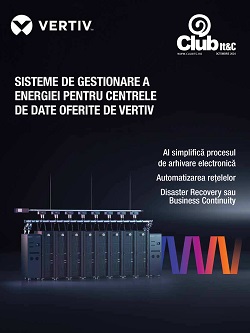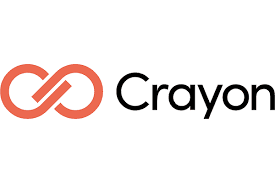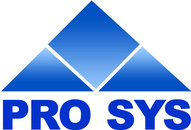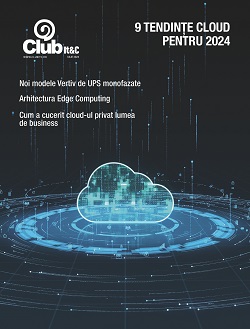New technological solutions for governments require effective communication and education to invoke the interest of stakeholders. The expert suggests engaging the public through effective IT project communication strategy, including traditional and social media, might help the new govtech solutions to reach their full potential.
 Since the beginning of last year, governments have been pouring investments into e-systems, which can be largely attributed to the COVID-19 pandemic and the outlined need for e-solutions. However, some experts say that despite the increased focus on e-government projects, there is a noticeable tendency to overlook the importance of boosting public engagement before and after their implementation, highlighting their end result to the stakeholders.
Since the beginning of last year, governments have been pouring investments into e-systems, which can be largely attributed to the COVID-19 pandemic and the outlined need for e-solutions. However, some experts say that despite the increased focus on e-government projects, there is a noticeable tendency to overlook the importance of boosting public engagement before and after their implementation, highlighting their end result to the stakeholders.
Mindaugas Glodas, CEO at NRD Companies, a global information technology and consulting group specializing in e-governance and development of economic digital infrastructures, which has implemented e-government solutions in more than 50 countries, said that the development of various GovTech projects needs to combine several integral aspects to be successful: public involvement in the project, employee training, and effective IT project communication.
“Engaging communication with the public and businesses is essential in order for them to not be reluctant to use or apathetic towards new governmental initiatives,” said Glodas. “Communication about their added value is essential for the technological innovations to work and prove beneficial for both the governments and the public.”
Mr Glodas has shared five tips NRD Companies specialists have gathered over the years on how to effectively enable new GovTech solutions and boost the involvement of stakeholders.
1. Plan campaigns to communicate and engage the public
When promoting government IT projects, it is important to take into account that communication is essential to both educate and engage the public. Boosting civil participation is more likely to get the public to approve and build their trust in the new systems.
This will help ensure that the new GovTech projects are actually used and trusted by the stakeholders, which will determine their overall success. The primary focus of the IT project communication should be to engage the citizens, inform them about the benefits that e-solutions will bring, and promote user involvement.
2. Establish a communication line and target audiences
In order to effectively promote IT projects and encourage public engagement, governments should focus on establishing a clear communication line or main message. It is equally important to select target audiences for this communication.
The communication line can differ depending on the target audience it is intended to reach. When communicating about e-solutions, the primary focus should be on the main users of GovTech–the general public (G2C), government officials (G2E) and businesses (G2B).
3. Choose appropriate distribution channels for the IT project communication
A variety of educational articles or videos in traditional or social media channels might prompt the general public to see the benefits of continuous use of e-solutions.
Besides traditional media, like newspapers or TV, governments should also utilize social media, which has become the main channel of information for adolescents—between 43% and 64% of them look for news online.
For example, the government of India is aware of the rapid increase in internet users and took to “Twitter” to promote the “Digital India” project, a campaign to endorse e-governance and digitization in the country. The “Twitter” account for the project has gathered more than one million followers, nearing two million.
Officials and business representatives can be engaged through webinars and professional training sessions. Webinars have an advantage because they can be accessed from anywhere and still offer the participants an engaging experience and studies have found that the popularity of webinars tripled over the last few years, as the number of attendees grew to more than 60 million people. As NRD Companies experience conducting webinars for governments like Samoa prove, they can be used as an alternative for traditional training sessions to introduce GovTech, promote its’ benefits as well as educate the participants by answering any questions they might have.
4. Invest in quality content
For e-solutions to reach their full potential, governments are advised to invest in quality content during the IT project communication process. If the information is presented in an engaging and welcoming way, there is a higher likelihood that the general public and businesses will want to participate.
For instance, visual information, like videos, engage the audience the most—studies have found that 65% of the population are visual learners. Governments should consult professionals and establish which formats for their communication will garner the most public participation and interest.
5. Introduce gamification to get everyone involved
Studies show that gamification of e-government systems can help boost public engagement by offering rewards and introducing clear benefits to the citizens.
For example, gamification campaigns like lotteries for the citizens might act as a way to increase VAT gatherings by encouraging citizens to ask for fiscal receipts, all at the same time bringing awareness and engagement of the citizens. In January of this year, Italy followed this strategy and launched a lottery to try to reduce tax evasion. The lottery will be active until the end of 2021, and Italy’s officials publish a list of the draws regularly.
However, it is important to take into account that lotteries are not an acceptable form to encourage civic engagement in Islamic countries and may be inappropriate in other cultures as well.
“While governments are the initiators of crucial technological changes, involving the general public and businesses in a deliberate and strategic way is what actually makes any IT project successful and helps generate the best return on investment,” said Mindaugas Glodas. “The stage of public involvement should not be overlooked and governments are advised to start promoting the end results of the e-solutions before and after their implementation,” he concluded.






























